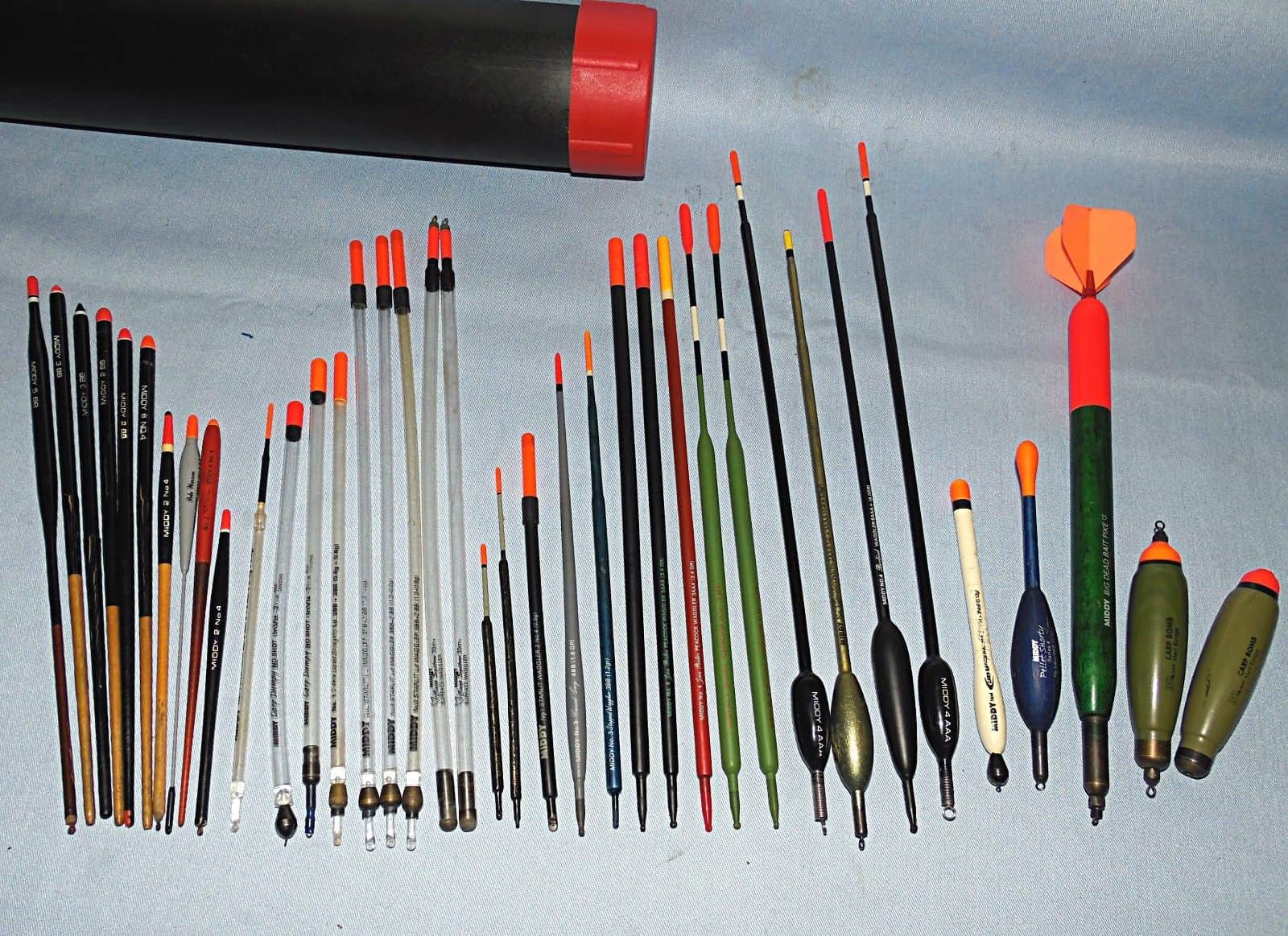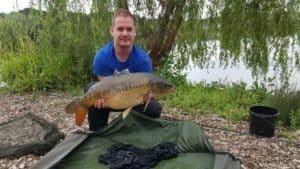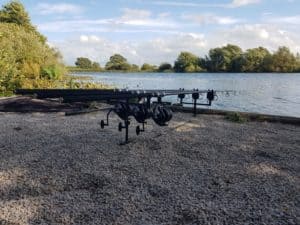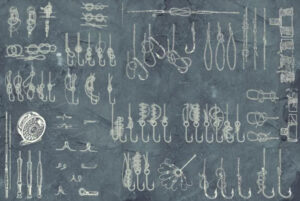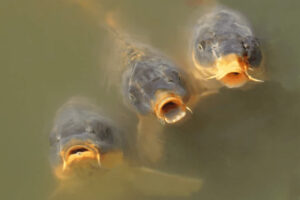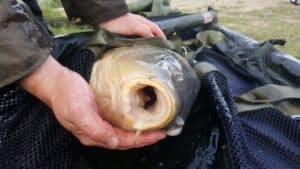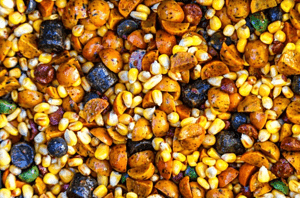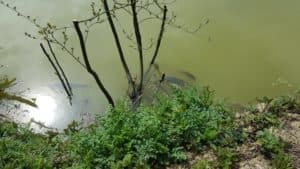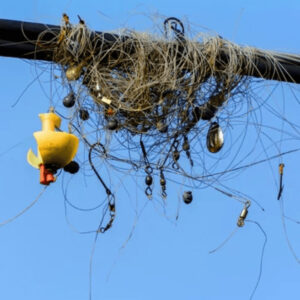What is float fishing and how can it be used to catch carp specifically?
Float fishing is a method of fishing where the float (often made of cork or plastic) is used to support the bait and line.
The float is attached to the line and then the bait is suspended below it.
When a carp takes the bait, the float will dip under the water, alerting the fisherman that there is a bite.
Float fishing for carp can be an effective method specifically because it allows the fisherman to use a smaller hook, making it less likely for the carp to detect it.
In addition, float fishing can be used to target specific areas where carp are known to congregate.
By casting the float into these areas, fishermen can increase their chances of getting a bite.
Float fishing can be an enjoyable and productive way to fish for carp, and with a little practice, it can be an effective way to catch these elusive fish.
The benefits of float fishing for carp compared to other methods
Float fishing for carp is a technique that has many advantages compared to other methods.
For one, it allows anglers to target the upper layers of water where carp often feed.
This is because the float suspends the bait at a specific depth, making it easier to reach the fish.
Additionally, float fishing provides greater accuracy and presentation than other methods, meaning that the bait is more likely to be seen and eaten by the fish.
The final advantage of float fishing for carp is that it allows anglers to fish in smaller areas with greater success.
This is due to the fact that floats can be accurately placed using the clip of the reek, making it easier to introduce bait over time and encourage carp to feed confidently.
Float fishing is a superior method for targeting carp and should be considered by any angler looking to improve their success rates.
Different types of fishing floats and their purposes
There are a variety of different types of fishing floats available, each designed for a specific purpose.
Pellet wagglers, for example, are commonly used when fishing for carp.
The float is weighted at the bottom, and pellet bait is placed under the float.
As the fish feed on the bait, they will cause the float to dip under the water, indicating a bite.
Bagging or feeder wagglers are another type of float that can be used for bait fishing.
These floats are also weighted at the bottom, but they have a larger diameter and are designed to hold more bait.
Feeder wagglers enable you to pack ground bait onto the float given a consistent stream of bait near the float
Upright controllers are another common type of float, which is often used when fishing for carp.
The float is attached to the line using a clip, and the line runs through a hole in the float.
This allows the angler to control the depth of their line, making it easier to keep their bait in the strike zone.
Surface controllers are similar to upright controllers, but they are designed to fish on or near the surface of the water.
These floats are often used when targeting fish such as carp that are feeding on the top layers of the water.
Straight wagglers are another type of float that can be used for bait fishing.
These floats sit vertically in the water, with the weight at one end to cock it upright.
This design makes it easy for bites to be detected, allowing anglers to set the hook quickly.
Finally, dibbers are small floats that can be used when bait fishing or when fishing with live baits such as maggots or worms.
These floats sit vertically in the water and have a small bead at the top, which helps anglers detect bites more easily.
Different types of fishing floats serve different purposes, so it’s important to choose the right float for your needs.
How do you rig a float for carp fishing?
Step 1: Thread your float onto your mainline, then attach a couple of large split shots to the end of the line and lightly pinch them in place. This will help keep the float from slipping off when you cast it out.
Step 2: Once the float is secured, tie on your hook using a half-blood knot. Then place the bait band around your pellet and put the hook through the bait band.
Step 3: To determine how deep you should cast your line, use a plumbing lead. This will allow you to find the optimal depth for fishing.
Step 4: Once the correct depth has been determined, adjust the float accordingly and secure it with more split shots. Make sure to balance the float out by adding a couple more shots on either side of it.
Step 5: Finally, attach one more split shot near the hook so that you can detect subtle strikes and make sure you don’t miss out on any bites. This extra weight will also help keep your bait in place.
Tips and tricks for successful float fishing for carp
Float fishing is a common method for carp fishing, and can be quite successful if done correctly.
One tip is to use a heavier line than you would for other types of fish such as silverfish, as carp are known for their strong fight.
Another helpful tip is to use bait that is high in protein, such as corn or bread.
Carp are also attracted to bright colors, so using a brightly colored float can be helpful in getting their attention.
Finally, it is important to be patient when float fishing for carp, as they tend to be cautious when taking the bait.
By following these tips, you can increase your chances of success the next time you go float fishing for carp.
The best time of day and season for float fishing for carp
Spring and early summer are the best times for float fishing for carp.
The water is warmer, so the fish are more active, and there is a greater abundance of food for them to eat.
In addition, the days are longer, so you have more time to fish.
The best time of day to fish is early morning or evening when the sun is not as bright.
This ensures that the fish will be more likely to bite.
Float fishing is a great way to catch carp. By using a float, you can keep your bait at the right depth and in the right location to maximise your chances of a successful catch.
With a little patience and practice, you can enjoy hours of peaceful float fishing while waiting for that elusive carp to take the bait.
Now that you know all about float fishing for carp, it’s time to give it a try!
This method of fishing is simple and effective and can be done by anglers of all levels.
With a little patience and practice, you’ll be hauling in carp like a pro in no time.
So what are you waiting for? Get out there and start float fishing for carp today!
FAQ
Q: What is float fishing for carp?
A: Float fishing for carp is a method of angling where a buoyant device, known as a float, is attached to the line and used to suspend bait in the water. The clip on the reek allows anglers to place bait accurately over time and encourages the carp to take the bait and bite.
Q: What type of line should I use for float fishing?
A: It is best to use heavier lines when float fishing for carp, as they are strong fighting fish and can easily break lighter lines. Monofilament and braided lines both work well, but it is important to make sure they are strong enough to handle the carp.
Q: How do I attach the float to my line?
A: The float should be attached to the line using a clip and split shots. This will help keep the float from slipping off when you cast it out.
Q: What type of hooks should I use for float fishing?
A: It is best to use small hooks when float fishing for carp. This ensures that the fish can take the bait with ease and will not be able to get away with it.
Q: What type of bait should I use?
A: Carp are attracted to high-protein baits such as corn or bread. You can also use brightly-colored floats to attract the carp’s attention.
Q: What is the best time of day and season for float fishing?
A: For the greatest chance of success, it is best to float fish during the early morning or evening when the sun is not as bright. Spring and early summer are the best times for float fishing as the water is warmer and there is an abundance of food for carp.
Q: What should I do if I don’t get any bites?
A: If you find yourself not getting any bites when float fishing, try to mix it up a bit. Move around to different spots in the water, change up your bait and try different colors of floats. The key is to be patient and keep trying until you find something that works.
Related Posts
I have made a lot of mistakes during my fishing sessions and don’t want you to make the same mistakes. I’ve learned the hard way over 20 years of fishing most weekends, testing, tweaking, and testing again and now want to help you excel with your carp fishing.
If you need any help, you can reach me at Fishing Again’s Facebook page
Last Updated on January 31, 2024 by Shane

